Donald F. Schwarz, vice president for program at the Robert Wood Johnson Foundation, invited people to stand: Who among the attendees at the 2017 Mobilizing Action for Resilient Communities (MARC) National Summit—more than 170 scholars, educators, social service providers, policy-makers and activists—felt passionate about storm water management?
Few rose from their seats.
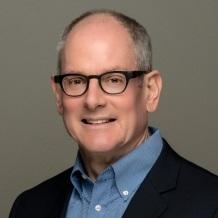
Schwarz then connected the dots: communities with poor storm water management—which tend to have lower incomes and higher minority populations—also have homes with more mold, which leads to higher rates of illness and hospitalizations, along with stress-related symptoms…all of which make it harder for a 5th-grader in one of those households to succeed at math.
“Is storm water management important to those who want to work on [adverse childhood experiences (ACEs)]?” he asked. This time, the audience responded with a chorus of nods. “The real issue is that all of these things can be tied together,” Schwarz said. “That’s why cross-sector collaboration is critical.”
After two years of working to prevent ACEs and build community resilience, the 14 communities in the MARC “learning laboratory” are demonstrating that cross-sector collaboration is more than the sum of its parts. And this model—networks that can include representatives from education, social service, health care, government, law enforcement and the justice system—is increasingly appearing, outside of MARC, all across the country.
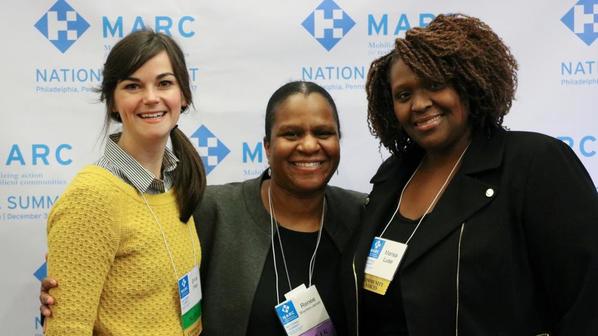
Pictured at the Summit (left to right): Erica Pike, Renée Boynton-Jarrett, and Marisa Luse from the Vital Village Network in Boston, MA, one of the 14 communities participating in MARC.
In East Lake, a community in Atlanta, Georgia, a cross-sector coalition that included public housing agencies, pre-school providers, philanthropists and business owners transformed a violence-plagued public housing project to a mixed-income development in which crime dropped while high school graduation and adult employment vaulted to 100%. “Connecting the dots makes a difference,” Schwarz said.
In San Francisco, HOPE SF plans to remake the isolated, deteriorating Potrero Hill housing project using a trauma-informed lens—that is, by creating a mixed-income neighborhood that includes open space, recreation centers and child-care facilities along with new streets, sidewalks and sewer systems.
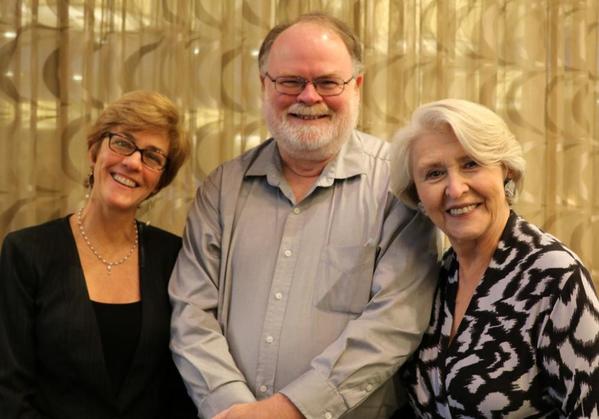
Steven Eldred, pictured with Martha Davis (left) of the Robert Wood Johnson Foundation and Natalie Levkovich of the Health Federation of Philadelphia, at the Summit.
And just blocks from the site of the MARC Summit sits the South Philadelphia Community Health and Literacy Center, a partnership between Children’s Hospital of Philadelphia, the city’s Department of Public Health, the Free Library and a recreation center.
“We’re seeing multi-agency, cross-system efforts pop up all over: city, county, school districts,” said Steven Eldred, senior program manager at The California Endowment, which funded MARC communities in San Diego and Sonoma County. “We’ve begun to talk about the cumulative impact of working together.”
That impact is visible at ground-level, when individuals long involved in community-building find context, solidarity and support for their work as change agents through cross-sector networks—and when those networks, in turn, amplify the efforts of neighborhood people and groups.
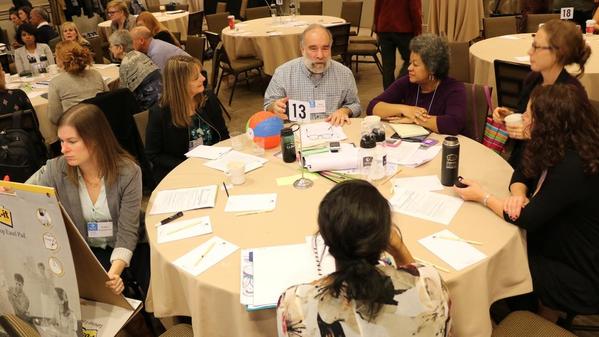 During the Summit's Open Space session, participants engaged in small group discussions on audience-driven topics, including the future direction of and key challenges facing cross-sector networks.
During the Summit's Open Space session, participants engaged in small group discussions on audience-driven topics, including the future direction of and key challenges facing cross-sector networks.
Cross-sector coalitions are also making a difference at the state and national level. Thirty-nine states—many of them prodded by local or regional networks—now collect ACE data as part of the Behavioral Risk Factor Surveillance System (BRFSS). First spouses in Wisconsin, Illinois, Tennessee and other states have become champions for trauma-informed healing. The Campaign for Trauma-Informed Policy and Practice (CTIPP) educates and advocates with state and federal lawmakers. This summer, two members of Congress (a Democrat and a Republican) co-introduced a resolution on the effectiveness of trauma-informed care.
Schwarz urged listeners to further their ACE-prevention and resilience-building work by focusing on root causes—poverty, racism, gender inequities—as well as the ways ACEs manifest in poor physical and mental health, substance abuse and violent behavior. “Do the work you’re doing and collaborate even more broadly,” he said. “Think big. It’s probably the only direction forward for so many of our children.”
Anndee Hochman is a journalist and author whose work appears regularly in The Philadelphia Inquirer, on the website for public radio station WHYY and in other print and online venues. She teaches poetry and creative non-fiction in schools, senior centers, detention facilities and at writers' conferences.
Learn More: MARC National Summit


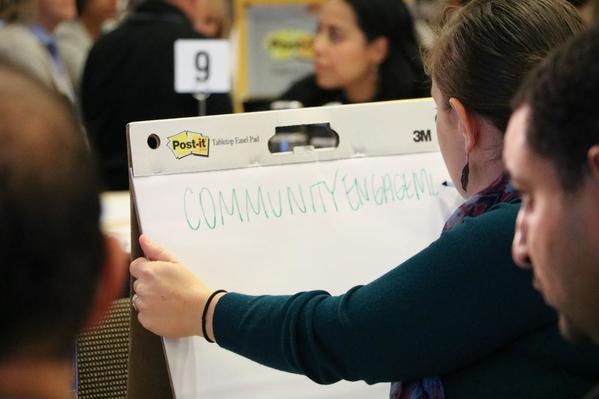





Comments (0)